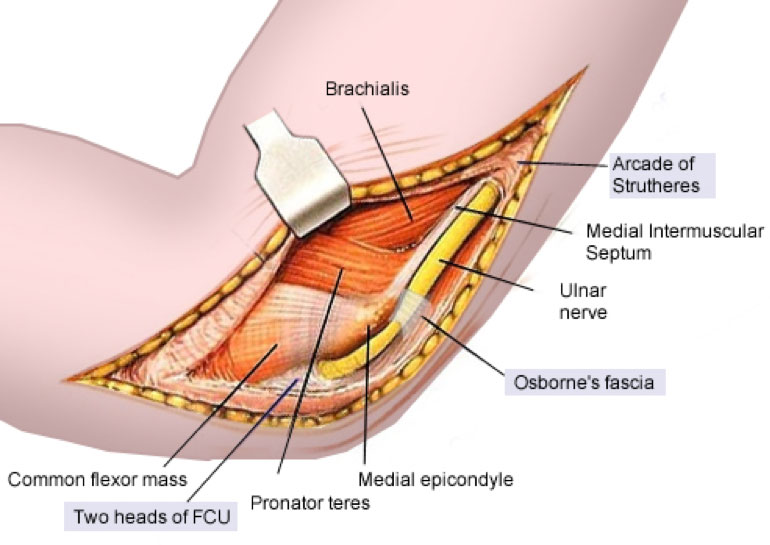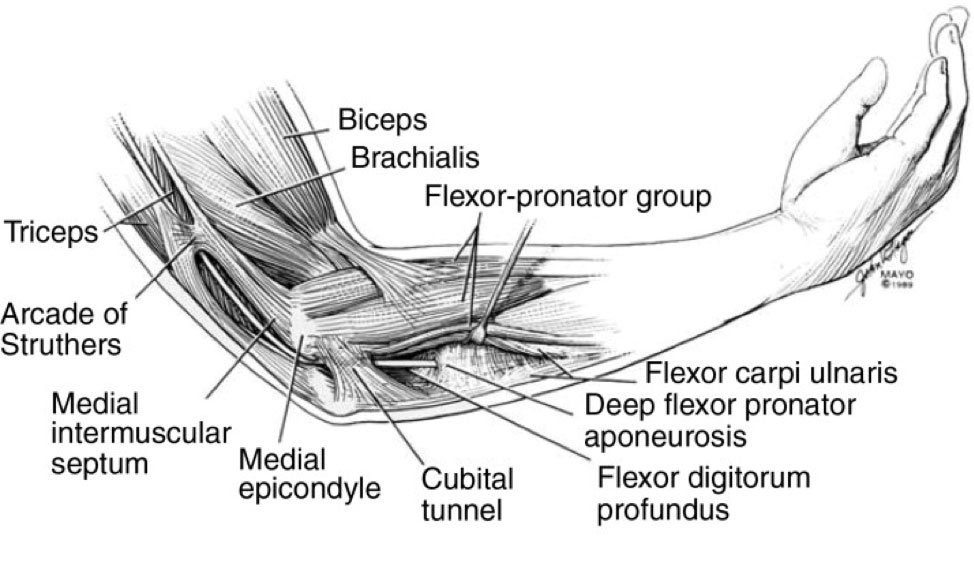Cubital Tunnel Syndrome
Cubital Tunnel Syndrome is the second most common peripheral nerve compression. It results from excessive pressure on the ulnar nerve within the cubital tunnel. Although people most often experience numbness, tingling, and sometimes a vague achy pain in their hands, these symptoms most often originate from a pinched nerve at the elbow. It usually affects the small finger and the ring finger. Symptoms usually start intermittently at first, but become more frequent over time. If left untreated, it can cause muscle loss, weakness, poor coordination, and permanent sensory loss in the fingers.
Your doctor will perform a physical exam and might order a nerve conduction study to help confirm the diagnosis. Nonsurgical treatments may include wearing elbow splints at night, taking medication, and avoiding activities that aggravate the symptoms. Should these treatments fail to alleviate the symptoms, surgery is often the next step.
During surgery your doctor will open the “roof” of the cubital tunnel. This will alleviate the pressure on the nerve which will restore blood flow to the nerve. Once the nerve has adequate blood flow, it can begin to slowly heal itself. After the nerve has been decompressed, the elbow will be flexed and extended to see if the nerve stays in its normal position. If the nerve snaps or slides around too much, your doctor may need to move the nerve to a safer position; this is called a transposition.
Content provided by Dr. Alexander Majors. To schedule an appointment with Dr. Majors at Sierra Pacific Orthopedics' Herndon Campus, please call (559) 256-1639.

